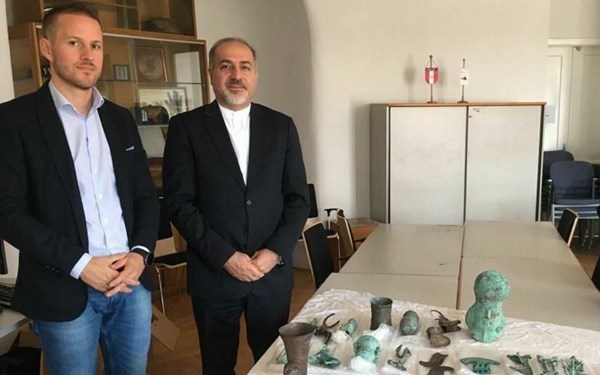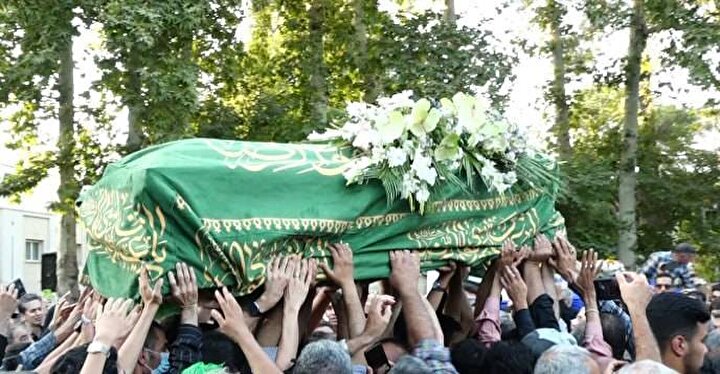جامعه باستانشناسی درگذشت خالد الاسعد را تسلیت گفت
به گزارش گروه فرهنگی «خبرگزاری دانشجو» در بیانیه «جامعه باستان شناسی ایران» آمده است: خالد الأسعد آنچنان زندگی اش را وقف مطالعه و شناساندن شهر پالمیرا کرده بود که او را «آقای پالمیرا» می نامیدند. شهر پالمیرا نمایشگر آمیختگی فرهنگی شرق (ایران) و غرب (روم) است و تلاشهای الأسعد در روند ثبت پالمیرا به عنوان میراث جهانی در یونسکو بسیار مؤثر و اساسی بود.
وی تنها برای مدتی و برای تحصیل در رشته تاریخ و آموزش در دانشگاه دمشق مدتی از پالمیرا دور بود و پس از بازگشت، بیش از ۴۰ سال مدیریت امور آثار باستانی پالمیرا را بر عهده داشت. او طی فعالیت حرفهای طولانی و فداکارانه اش انتشارات علمی چندی نیز درباره این شهر کهن به نگارش درآورده است و همچنین دانشمندی خودساخته درخوانش کتیبه های آرامی پالمیرا بود.
الأسعد پس از پرهیز از همکاری با نیروهای داعش و خودداری از برملا کردن مخفیگاه آثاری که از پالمیرا به منظور محافظت خارج شده بودند، روز سه شنبه ۲۷ امرداد ۱۳۹۴ به طرزی فجیع اعدام شد. در حالی که فرصت داشت به راحتی همراه این اشیاء تاریخی از پالمیرا خارج شود، الأسعد انتخاب کرد که در پالمیرا بماند.
پایان غم انگیز زندگی او نشان از شجاعت، تعهد و وفاداری ستودنی نسبت به حفاظت از میراث مشترک بشری دارد که در حافظه تاریخی منطقه و جهان ثبت خواهد شد. بی شک نام خالد الأسعد نه تنها به عنوان نگاهبان تاریخ و فرهنگ سوریه، بلکه نگاهبان میراث جهانی در یاد جهانیان باقی خواهد ماند.
«جامعه باستان شناسی ایران» اندوه خود را نسبت به فقدان این نگهبان میراث مشترک بشری و باستان شناس و پژوهشگر متعهد ابراز میکند.
In Memorium of Khaled al-Asa’ad: An Archaeologist Who Sacrificed Himself to Protect Palmyra and Syrian Cultural Heritage
The brutal murder of Khaled al-Asa’ad, the Syrian archaeologist overseeing the UNESCO world heritage site Palmyra, by the self-proclaimed Islamic State (ISIS) has deeply saddened and shocked everyone, especially the international community of archaeologists and cultural heritage specialists. It is with heavy heart that the Society for Iranian Archaeology (SIA) sends their condolences to his family and colleagues in Syria and around the world.
On Tuesday, August ۱۸, ۲۰۱۵, Al-Asa’ad was executed ruthlessly after refusing to reveal to ISIS militants the location of valuable Palmyra artifacts that had previously been moved to a safer location. While he had the opportunity to easily escape along with the moved objects, he bravely chose to stay in Palmyra and protect it.
The ancient caravan city of Palmyra was an example of a fusion between the East and West. Al-Asa’ad was so dedicated to the study and preservation of Palmyra that he was known as “Mr. Palmyra”. His efforts were instrumental in the nomination and selection of Palmyra as a UNESCO world heritage site. Al-Asa’ad lived almost his entire life in Palmyra, only leaving for a brief time to study and pursue a degree in history and education at the University of Damascus. He was the head of Palmyra’s antiquities for over ۴۰ years. He authored many significant publications on Palmyra in his long devoted career and was a self-taught scholar of ancient Aramaic inscriptions.
His life-long dedication to Palmyra, even in the face of death during his final moments, is a prime example of an archaeologist’s courage and loyalty to the stewardship of cultural heritage for future generations. Without a doubt, Khaled Al-Asa’ad will be remembered as representing not only stewardship of Syrian culture and history but also world heritage.

